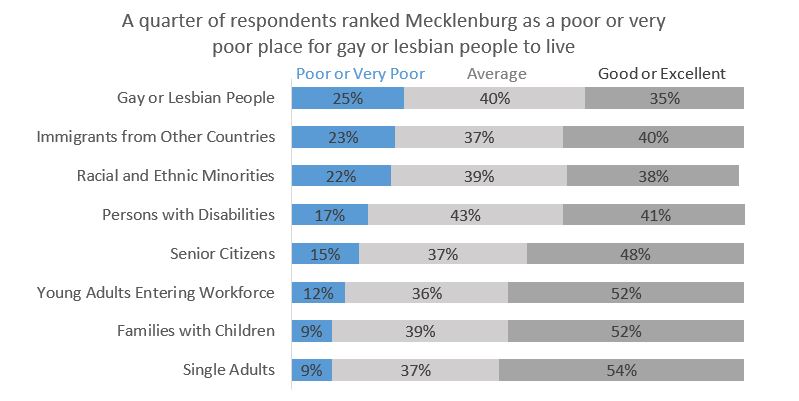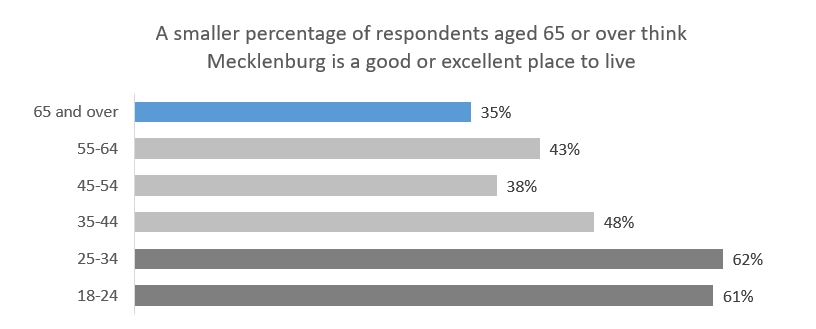Dig into your survey data with the Charlotte-Mecklenburg Annual Survey

In January 2017, 400 Charlotteans responded to a 15-minute phone survey. The survey was representative of the Mecklenburg County population and, among other questions, asked respondents, “When thinking about Mecklenburg County as a place to live and the opportunities and amenities it provides, how would you rate Mecklenburg County for the following groups of people?”
A quarter of respondents said Mecklenburg is poor or very poor for gay or lesbian people, followed closely by opinions of Mecklenburg as poor or very poor for immigrants from other countries (23 percent) and racial and ethnic minorities (22 percent). Things looked better for senior citizens, young adults, families with children, and single adults, all categories in which 15 percent or less of respondents ranked the county as very poor or poor.

But, let’s dig into some of these results.
The older population does not seem to agree on how good a place to live Mecklenburg is for seniors. Nearly half of respondents (48 percent) said Mecklenburg is a good or excellent place for senior citizens to live. However, only 35 percent of respondents age 65 and over felt that way compared to more than 60 percent for both the 18-24 age group and the 25-34 age group. While the sample size when these groups or results were broken down were small (50, 49, and 81, respectively), the difference was statistically significant.

While the number of senior citizens is not representative of the entire senior population, the finding of a statistically significant difference warrants more investigation and/or action. Other examples of statistically significant differences, presented below, could also have meaningful policy and programmatic implications.
- Fifty-eight percent of respondents with a college education or higher said Mecklenburg is a good or excellent place for young adults entering the workplace compared to just 32 percent of respondents who did not compete high school.
- Forty-four percent of white respondents said Mecklenburg is good or excellent for racial and ethnic minorities, compared to 29 percent of Hispanic and black respondents.
Finally, even when there are not statistically significant differences, differences in population proportions can lead to further questions and reflection. For example, a higher percentage of respondents who have lived in Mecklenburg 1-5 years felt that Mecklenburg County is a good or excellent place for newcomers (70 percent) than respondents who have been here for more than 20 years (52 percent). Even though the difference was not statistically significant, it is probably good news that more newcomers feel Mecklenburg County is a good or excellent place to live.
Do you have questions? The Charlotte-Mecklenburg Annual Survey can provide answers. Contact d.gavarkavich@charlotte.edu by Nov. 10 if you are interested in participating in January 2018.